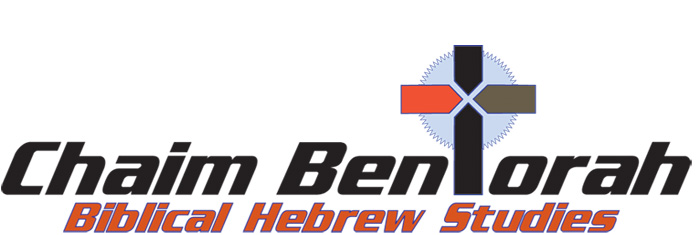Hebrew Word Study – Seed – Tazeri’a תזריע Taw Zayin Resh Yod Ayin
Leviticus 12:2: “Speak unto the children of Israel, saying, If a woman has conceived seed, and born a man child: then she shall be unclean seven days; according to the days of the separation for her infirmity shall she be unclean.”
Do you ever wonder why, when a woman gives birth she is ritually unclean and must bath in a mikveh? One Jewish commentator says that the reason she must seek purification is that while in childbirth she will curse her husband, God, and declare she will never again bear a child, so she needs to be cleansed from this sin of cursing. Fortunately, there are other commentators and I like the more popular explanation.
In the Jewish Talmud in Niddah 31a it is taught that there are three partners in the creation of a human being. There is the tazeri’a or the seed of the woman, the man and the Neshamah, breath or life of God. The father provides the white tazeri’a or seed, out of which are formed the child’s bones, sinews, nails, the brain in his head, and the white of his eye. His mother supplies the red tazeri’a or seed out of which is formed the skin, flesh, hair, blood, and the black of the eye. God’s contribution is the spirit, breath, beauty of features, eyesight, the power of hearing, and the ability to speak and walk as well as understanding and discernment. When a person’s time comes to leave this world, God takes what is His and leaves behind the parts of the human’s father and mother.
Would you like Chaim Bentorah as your personal Hebrew teacher?
|
|
Cute, but note that the word seed or tazeri’a is found in our modern translation as to conceive or give birth. It is not used for God. Only the mother and father plant the tazeri’a or seed. Would not God’s portion be also a tazeri’a or seed? The woman’s impurity as discussed in Leviticus 12 is quickly followed by the laws of tzara’at which are the laws concerning leprosy in the 13th chapter.
What is interesting is that tazeri’a and tzara’at are pronounced almost the same. There is a play on words here. Now to understand the Jewish concept of this play on words you must understand that Jewish scholars do not believe the leprosy of the Bible the tzara’at is the same as what we call leprosy today or Hansen’s disease. The leprosy of the Bible is nothing close to Hansen’s disease. This skin turns white in the leprosy of the Bible, not the white flakiness that many refer to. This white is beheret, a bright white as white as snow. It is also described as se’eit or like the porcelain white of the skin of an egg. On top of that, it afflicts one’s garments and the walls of one’s house. Also, the Bible calls it a mark a naga’ or sign of leprosy. Jewish scholars teach that this is a spiritual affliction, not a physical disease.
The purpose for tzara’at was a punishment for lashon hara, evil speech. That would be gossip, hurtful language towards another, and would be something a person is really unaware that they are hurting someone else by their speech. This little white patch would appear as a warning that you are hurting someone with your speech and you had better quit. If you don’t it will spread and if it does, you are separated from the community as Miriam was when she spoke out against Moses.
If the mark of leprosy was found on garments these garments were destroyed, burned in a fire. If found on a dwelling and spread it was torn down. I recently read that scientists have been studying a chemical reaction that takes place in clothing worn by angry, hostile people and buildings where there was much anger and hatred. They discovered that there was a chemical reaction to these emotions that were then embedded into the walls of the building or garments. They told how people, even today, visiting Auschwitz, the Nazi concentration camp now a memorial/museum, tell how they could feel tension, fear, and even a heaviness on their chest. These scientists theorize that these are not just emotional reactions but a reaction to the chemical change that took place in these buildings.
When the children of Israel entered the Promised Land the Amorites fled from their homes leaving their clothing and other items behind. The children of Israel just took over the homes and clothing. It is possible the negative emotions of the former inhabitants were embedded in the walls and clothing that was left behind. God would mark or naga’ tzara’at these items and they would have to be destroyed. However, even in the midst of the loss of their new homes, there was a positive hidden treasure. Many of the Amorites before fleeing hid precious jewels, gold and silver in the hiding places in the home which were discovered in the destruction of the home.
The point of all this is that there are three partners in the creation of a human being. The mother and father plant the seed or tazeri’a of the fallen nature of man which is a play on the word tzara’at which is a sign of our need for salvation. We live with this mark or tzara’at for our duration here on earth. There is a constant battle between the flesh and the spirit. This battle will continue until the tzara’at is destroyed or when this body dies and what belongs to God will be retrieved by Him and the battle between the flesh and the spirit will end.
We may be saved but we still have that “old man” that Paul calls it living within us and will battle against our spirit all the time we are here on earth. We will continue to sin but Jesus has died for that sin and it will continue to be forgiven so long as we repent.
Hi there! Thank you for reading this Daily Word Study. Can I ask a favor? Share this Daily Word Study with your friends on Facebook and Twitter by clicking one of the icons below.
Thanks & Blessings, it means a lot to me!







Amen! Very informative!
Dear Chaim thankyou for your teaching and insight in God’s word,this lesson meant so much to me. Iam preparing to travel to NZ for my daughter’s funeral on Friday. Thankyou again,God Bless you ,Laura and your ministry in the name of Jesus Christ our Lord.
Dear Brian, we’re so very sorry for your loss. I just lost my brother and I see firsthand how hard it is on parents. We are praying for God’s peace for you and your family.